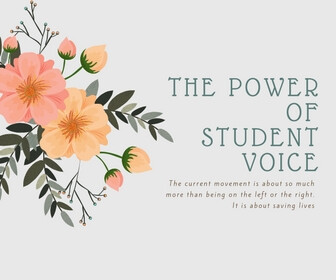E-mailing is a great tool in our schools. We have come a long way from when we had to make several trips to the mailroom throughout the day to check our mailboxes for memos from the principal. Today, e-mails are used to effectively and efficiently communicate with others. However, e-mails can also be used in a way that creates more work for school employees. Think of a time in your school when someone accidentally hit the “reply all” button when the e-mail was meant for just one person. Think of a time when someone accidentally forwarded an e-mail that was meant for a colleague to a parent. These workplace “oops” can have detrimental effects because they can influence the trust and culture in the school. Before getting into the who, what, why, and when of e-mail communication, the most important advice I can give is to write e-mails as if your principal or superintendent is reading them. This way, even if an e-mail is accidentally sent to the wrong recipient, the effect will not be as destructive.
Whom is the e-mail for?
Having an understanding of to whom you are writing the e-mail is probably the most important step. Are you writing to a parent? Student? Teacher? Administrator? Colleague? Central Office? Business Partner? Parent leaders? Are you writing to just one person or a group of people? Knowing your audience is important, but knowing the difference between the audiences is even more important. For example, an e-mail to a colleague could have a very different tone than an e-mail to a parent. However, regardless of the tone, always apply the “my boss is reading this e-mail” principle. In other words, regardless of whom the audience is, the what of the e-mail should always be professional.
What should be in the e-mail?
Reread every e-mail before you send it out. What exactly are you trying to say and is your e-mail capturing that? Reread the e-mail for tone. Is the tone condescending? If you’re not sure, ask another colleague to read it and get their opinion. Always ensure the e-mail is emotion free. When you get those e-mails that spark an emotion, wait a little bit before responding. The best way to keep the e-mail free of emotion is to stick to the facts and respond only to the question being asked. If there is no question, think about what it is that you are responding to. Sometimes it’s okay to just respond back with “Thank you for your e-mail.” Less is better! I recommend going by the “three lines or less” rule. The more you put in e-mail, the more you may set yourself up for difficulty when trying to diffuse situations.
Why e-mail?
If e-mails should be three lines or less, what happens if the message cannot be written in three lines or less? At that point, you pick up the phone and call or request a face-to-face meeting. When sending out an e-mail, ask yourself why this particular e-mail is being sent out. In other words, make sure to consider whether or not the message would be better delivered using another method. For example, a message to a parent about a student who is struggling in a particular area is probably best received if you talk to the parent over the phone or in person. A message about a student who has not turned in an assignment, on the other hand, can be sent in a simple e-mail that asks the parent to ensure the student brings in the assignment. Always remember to evaluate why you are sending the e-mail. Keep in mind that an e-mail is meant to be efficient and effective—if an e-mail is not the most efficient or effective way to relay a message, don’t use e-mail as your communication method.
When should you e-mail?
Nobody wants her phone dinging at 3:00 a.m. with e-mails. Unless it is an absolute emergency (at which point you should probably call), refrain from sending out e-mails at odd hours throughout the night. Keeping a balance in life is important. As stressful and time consuming as our work can be, try to sleep at night and stay off e-mail!
In conclusion . . .
Here are some quick tips for e-mail communication:
- Always write as if your supervisor is reading your e-mail.
- Keep e-mails free of emotion and to the point.
- Keep e-mails to three lines or less.
- Know when it’s more appropriate to pick up the phone or have a face-to-face conversation.
- E-mail during work hours, if possible—or at least before 10:00 p.m.








